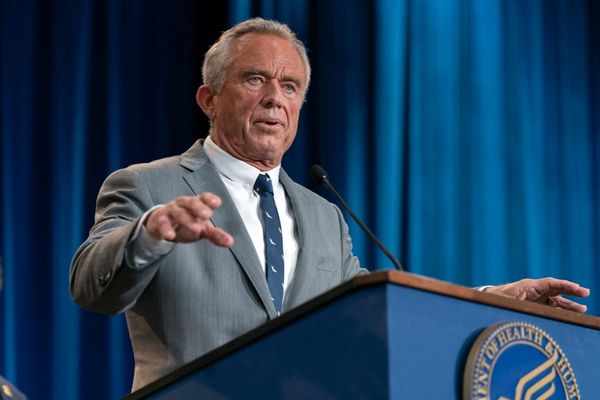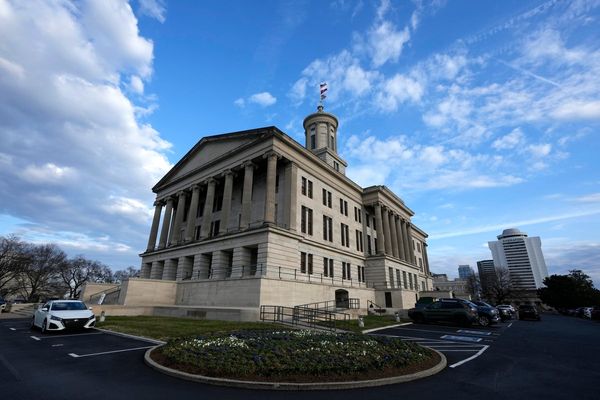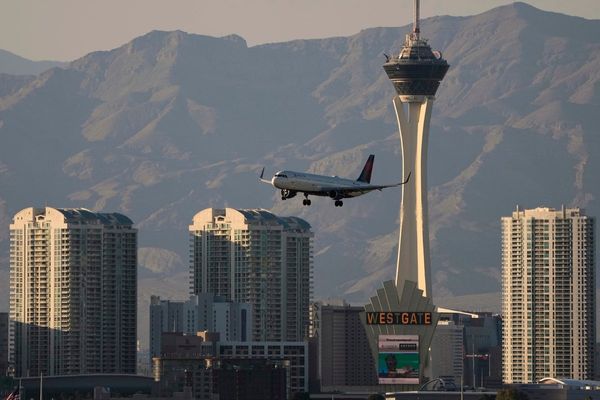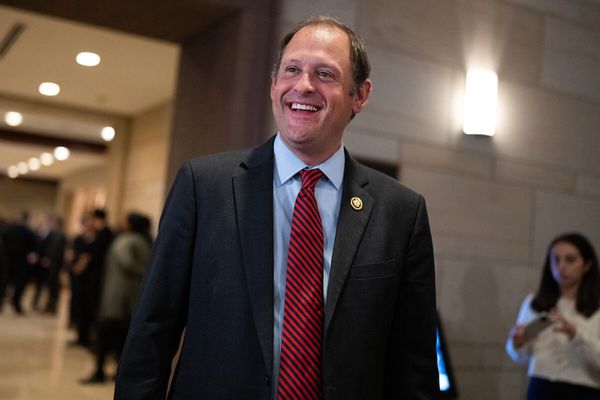
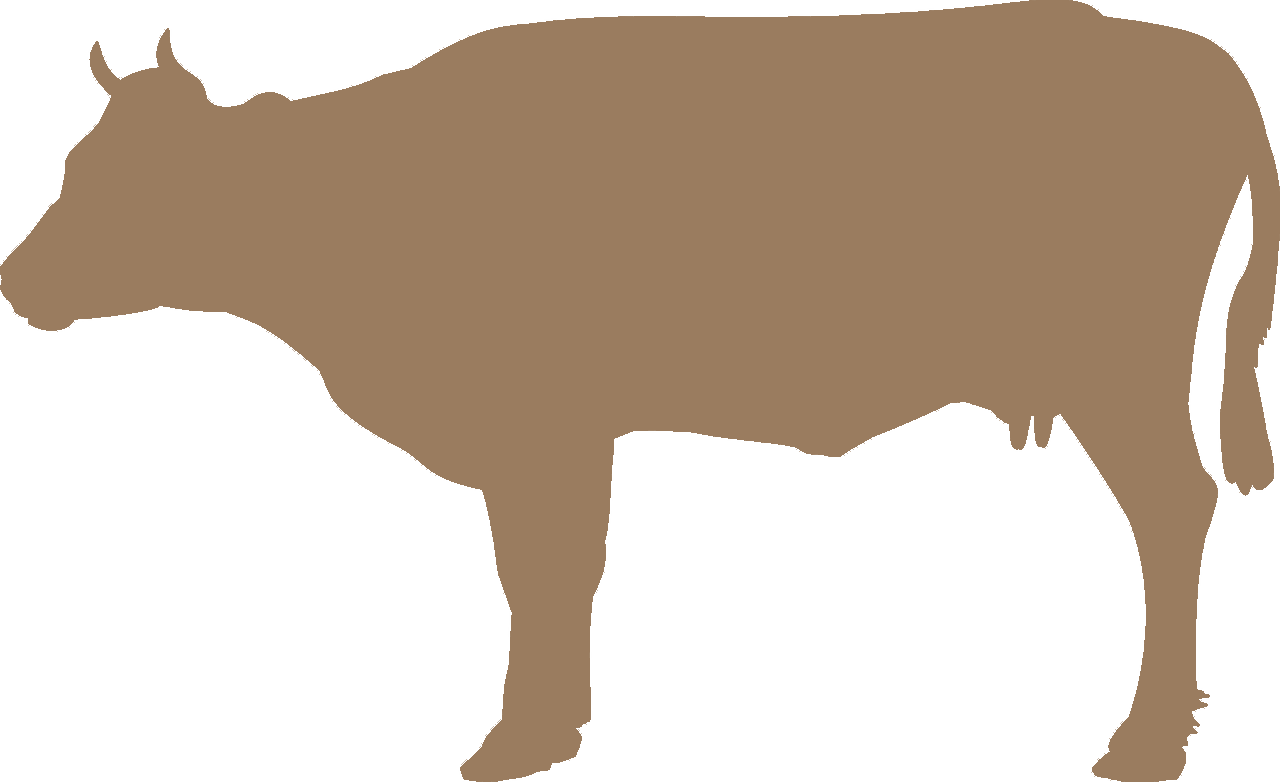
February 3, 2020
This article was produced in collaboration with the Food & Environment Reporting Network, an independent, non-profit news organization.
Lawrence Brorman eases his pickup through plowed farmland in Deaf Smith County, an impossibly flat stretch of the Texas Panhandle where cattle outnumber people 40 to 1. The 67-year-old farmer and rancher brings the vehicle to a stop at the field’s southern edge. Just across the fence line, Brorman eyes a mess of cattle standing sentinel upon a mound of dirt and compacted manure. They peer back at him, chewing cud, mooing, and, of course, pooping.
Though Brorman grazes 80 or so cattle on his land in Hereford, Deaf Smith’s county seat, the animals he’s currently staring down aren’t his. They’re held by Southwest Feedyard, one of the oldest cattle feedlots in the county. This place holds 45,000 head of cattle in bare-dirt pens for months at a time, fattening the animals on flaked corn before sending them to slaughter. It’s part of a vast constellation of feeding operations that dot the western Panhandle, which accounts for one-fifth of the entire U.S. beef supply. If you’ve ever eaten a hamburger, there’s a good chance the meat came from here.
Brorman rolls down the driver’s side window, and a rank odor wafts in from the Southwest feedlot. While good fences make good neighbors, they do nothing to stop the wind from sweeping up tiny fragments of dried manure from the feedlot surface and spreading them across Brorman’s farm. Some summer days, especially during droughts, the particles—which scientists call “fecal dust”—form dense plumes that blot out the sun. When the wind is high, a wall of dust churns through the town of 15,000, coating homes and businesses and limiting visibility on U.S. Highway 60 so severely that motorists must switch on their headlights well before sunset.
“You go outside and it’ll just burn your nose and your eyes,” Brorman says. The dust brings foul odors so pervasive that they can penetrate the Brormans’ farmhouse even when the doors and windows are closed. Lawrence and his wife, Jaime, use a more explicit term for the fecal dust: “shust,” a portmanteau of “shit” and “dust.” (Other folks who live here are partial to “shog,” a mashup of the same first word and “fog.”)
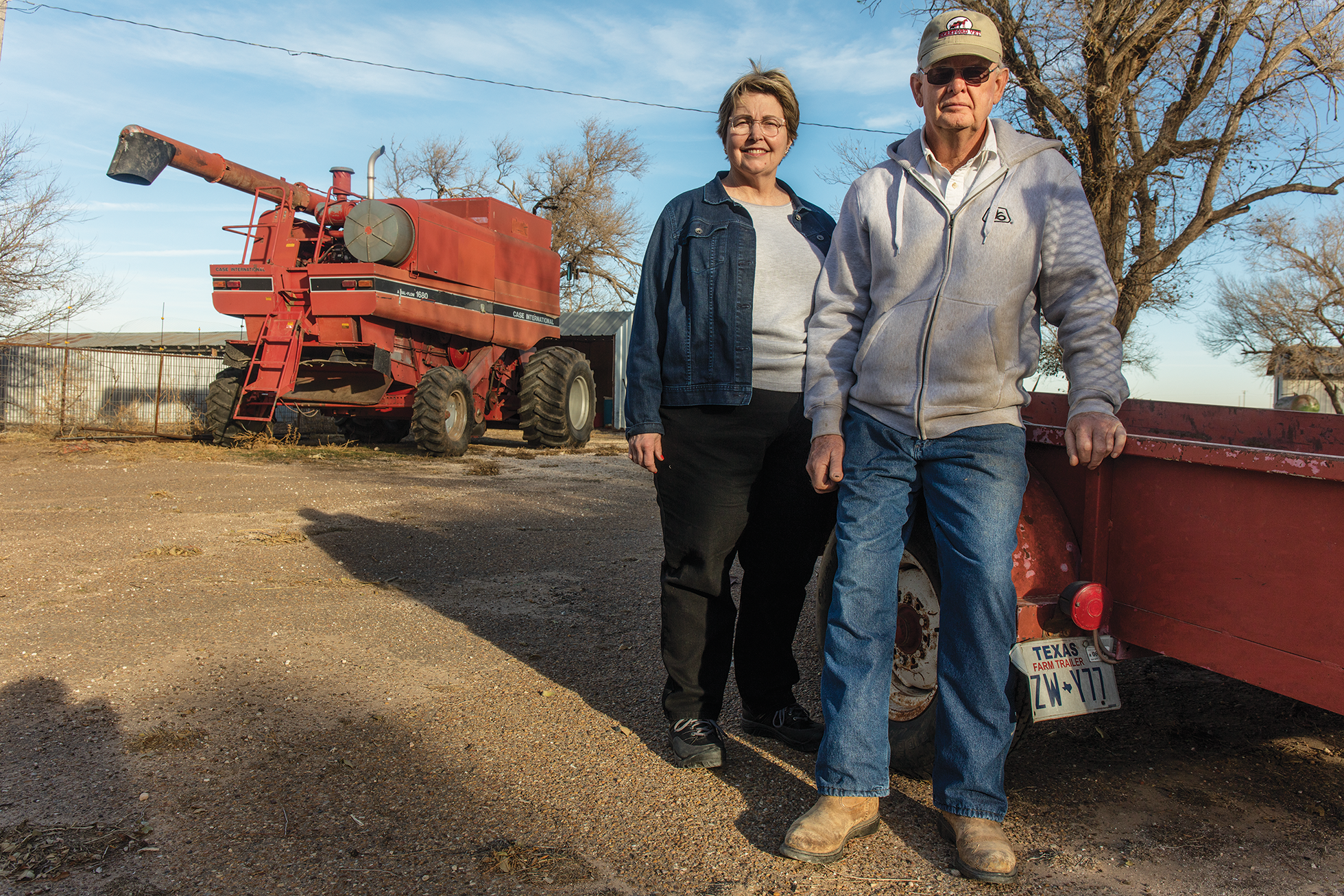
Whatever it’s called, the dust and odor are a consistent problem for the Brormans, who have submitted formal complaints to the Texas Commission on Environmental Quality (TCEQ), a state regulatory agency. From 2008 to 2017, at least 100 complaints about fecal dust and odor from feedlots have been registered with the agency, according to data obtained through an open records request. The comments reveal a problem potentially far graver than the smell.
“Each evening, around dark, a huge cloud of feedyard dust blankets the entire community. The cloud is so thick at times it is difficult to breathe,” a complaint from Oldham County reads. Another, from Hartley County, reported: “In the morning the air is full of a nasty smell and a brown haze of dust southwest of town. When the wind picks up, it blows across town and looks like smoke from a fire. When the air is still, the haze looms over town. It is causing major problems with my breathing and my children cough and sneeze all the time.”
The Observer, in collaboration with the Food & Environment Reporting Network and the Midwest Center for Investigative Reporting, spent four months investigating how fecal dust affects Texans and how TCEQ does little to stop it. Though the agency typically sends investigators to the site of a complaint, it appears the feed yards are mostly allowed to keep dusting their neighbors. The agency performs only perfunctory investigations of the complaints: From 2014 to November 2019, TCEQ took no enforcement action against large beef feedlots in the Panhandle. The agency levied no fines and issued no warnings, its own records show.
The health risks associated with breathing ammonia and particulate matter—both of which are byproducts of cow manure—are significant and well-documented. Ammonia is a key contributor to regional haze and can cause coughing and difficulty breathing; particulate matter is one of six major pollutants regulated by the Environmental Protection Agency—the tiny fragments can penetrate deep into the lungs and even the bloodstream. Exposure to particulate matter can cause asthma, an irregular heartbeat, difficulty breathing, and premature death in people with heart or lung disease. Hydrogen sulfide, which can impair a person’s respiratory and nervous systems, can also form as manure decomposes. A sizable body of research indicates that living in close proximity to concentrated animal feeding operations (CAFOs), including feedlots, can cause or exacerbate health problems.
“These are all well-known, well-understood pollutants,” says Dr. Anne Epstein, a physician who previously chaired the Lubbock Board of Health. “The health effects combine to give you shortened life expectancy, and that’s pretty dramatic.”
Now, the Brormans expect their farm to get a whole lot dustier—a new cattle feedlot is slated to be built right across the road from their home. TCEQ, which authorizes CAFO permits, is expected to approve plans for the 50,000-head facility.
Jaime is already frequently sick. When the dust is high, she has asthma attacks. Jaime uses an inhaler and is prescribed antibiotics for most of the year due to recurrent respiratory infections. Depending on the dust levels, her health is “up and down. I don’t go outside much,” she says. When she brought up the issue with her doctor, his advice was to “get out of Hereford,” she recalls. Then, the doctor said, “Well, I guess your husband won’t move the farm, huh?”
In the Panhandle, people living in feedlot hot spots experience some of the highest levels of asthma in the state, an analysis of American Lung Association data shows. Deaf Smith County has the 11th-highest rate of pediatric asthma among Texas’ 254 counties. Gaines, Yoakum, Ochiltree, Dallam, and Moore counties, all along the West Texas and Panhandle cattle feedlot corridor, ranked even higher.
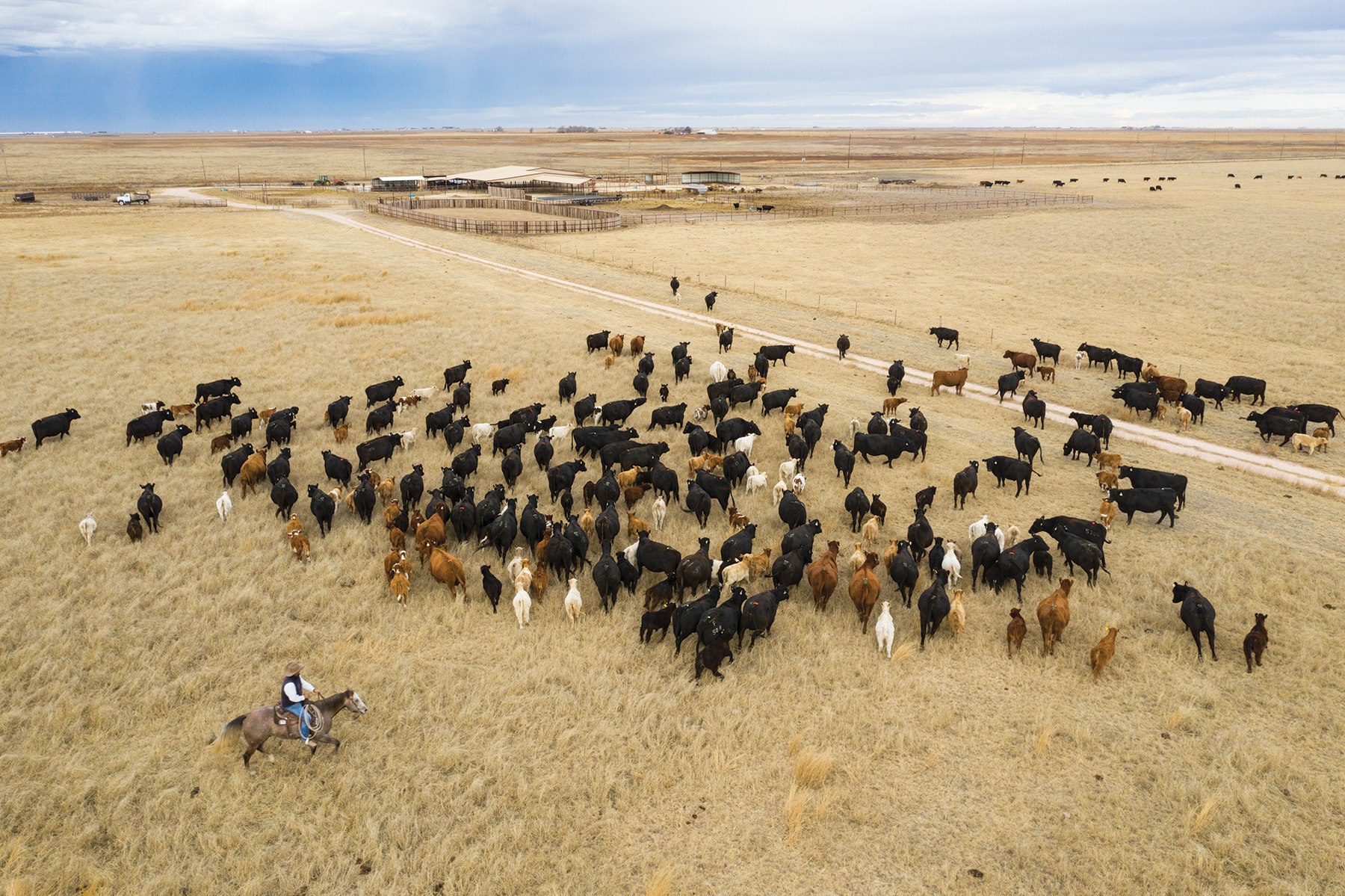
A 2009 study published by Oxford University Press found that doubling livestock production is correlated with a 7.4 percent increase in infant mortality due to respiratory disease. Another study, published in 2006, found that children living near CAFOs were at greater risk for asthma. “CAFOs are an excellent example of how environmental problems can directly impact human and community well-being,” the National Association of Local Boards of Health wrote in 2010.
Despite this, the Texas Department of State Health Services does no monitoring or testing to determine whether living near feedlots or other CAFOs in the Panhandle compromises human health. TCEQ operates a network of air quality monitors around the state, but the agency hasn’t placed one in Hereford or other small towns where fecal dust pollution is most pronounced.
All our investigations in one place. Sign up for our longform email:
That afternoon on his farm, Lawrence gets back in his truck and drives west to another of his fields, where the vicious Panhandle wind has reduced a quarter-mile-long irrigation sprinkler to a heap of twisted metal. The fecal dust rises in the air as he ponders how to salvage the $50,000 piece of equipment. Lawrence says he hates to be outside when the dust starts blowing, but there’s a lot of work to be done. “If you’ve got to work on your sprinklers or something, you’ve just got to work in it,” he says. “You get on a four-wheeler and ride down the road and you’re riding right through it. Then it’s on everything.”
Tonight, when he’s done with chores, he’ll disrobe in the garage, careful not to wear the manure-laced clothes in the house. When he showers, “the first thing you smell is crap. Whenever that water hits your skin and your hair and you’ve got that manure all over you, it just smells like manure in there for a second,” he says.
Jaime and Lawrence say the dust and odor from nearby feedlots have increasingly driven them to take shelter inside their farmhouse, which now serves as much as a bunker as it does a home. Half-jokingly, they’ve started referring to themselves as “the mole people.”
They have no ideological objection to raising cattle in feedlots. The Brormans raise livestock themselves, and they enjoy eating beef. “We’re just against feed yards that can’t take care of their dust or their smell,” Jaime says. “It should stop at their fence line.”

The cattle feeding industry, at least in its current form, is a relatively new invention in Texas agriculture. Historically, cattle spent little time in such close confinement, only being penned shortly after shipment to markets in Fort Worth and elsewhere. Around 1900, a Brownwood rancher discovered that cattle kept in pens adjacent to farmland would eat cottonseed that had already been pressed for its oil—a waste product cotton farmers had previously dumped in nearby ravines. It was more or less a cottage industry until the end of World War II, when the feedlot craze started sweeping the state, says David Brauer, a U.S. Department of Agriculture scientist who conducts research at an experimental feedlot near Amarillo. In 1955, a Big Spring rancher made a deal with Dallas oil magnate Clint Murchison Sr. to build a 30,000-head feed yard, creating what was then the biggest West Texas feeding operation and ushering in a new era of American agriculture.
Feedlots limit the animals’ movement while maximizing their nutrient intake. Cattle put on weight quickly and efficiently in such environments; it takes a mere six months for calves to balloon from 500 to 1,300 pounds when all they do is sit, eat, and create manure. Brauer says feedlots aren’t necessary to produce beef—free-range cattle can also pack on weight simply by grazing grass or other forages such as winter wheat. But in the Panhandle, scant rainfall means grass grows much more slowly than in other parts of the state. Here, it can take 2,000 acres just to graze 200 head of cattle.
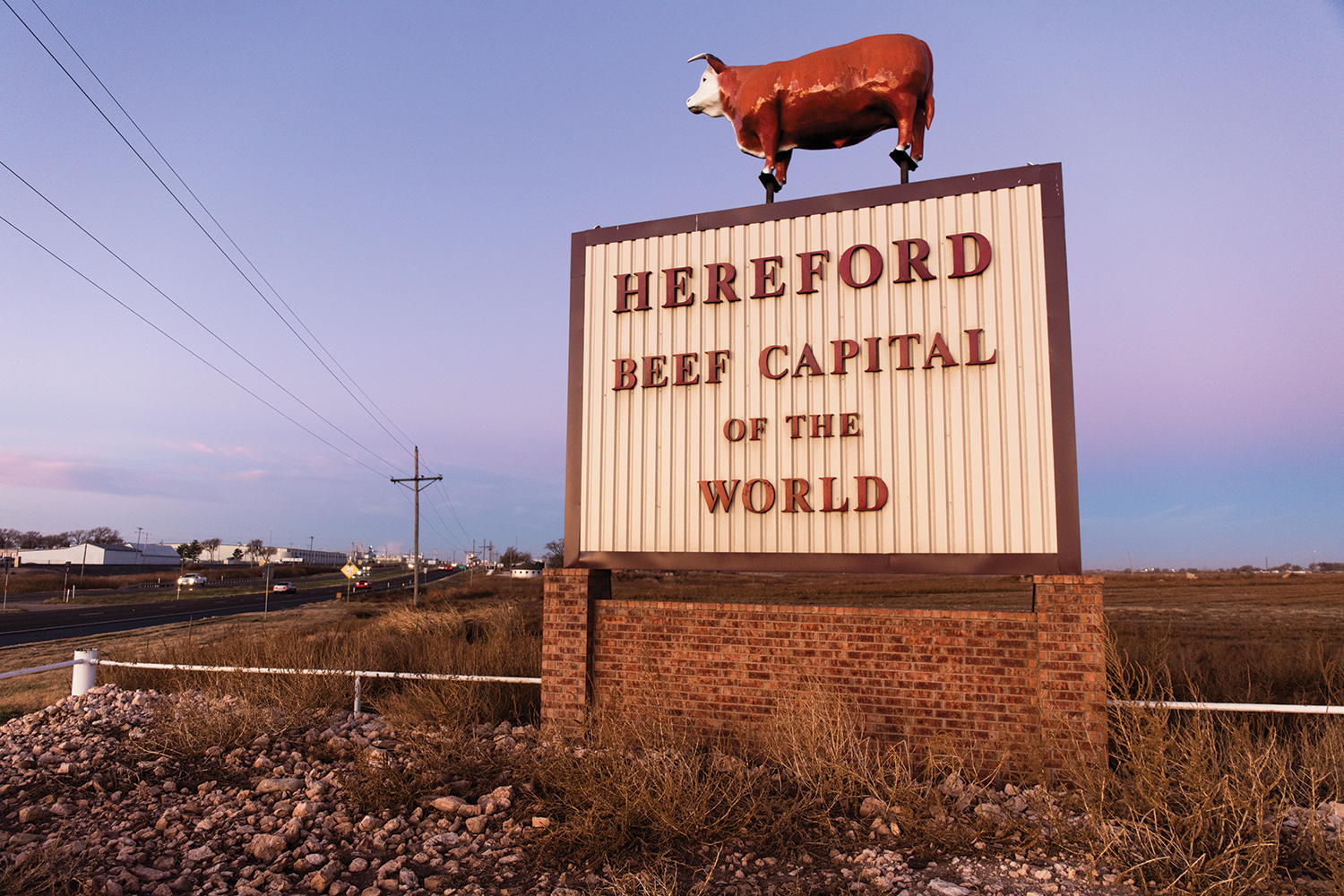
During the 1960s and ’70s, big feedlot operators began migrating north to the Panhandle because of good weather and ample groundwater, most of which comes from the Ogallala Aquifer, which spans eight states and is one of North America’s most depleted groundwater sources. In the Panhandle, feedlot cattle can suck up 8.5 million gallons of groundwater every day. Today, nearly 90 percent of Texas’ 2.5 million feedlot cattle are raised in just 10 Panhandle counties radiating out from Amarillo. Five Rivers, the world’s biggest cattle feeder, has set up shop here, along with Cargill and Cactus Feeders, which owns 11 area feedlots, including the one south of the Brorman home.
If the western Panhandle is the capital of cattle country, Hereford is its statehouse. Sprawling feed yards line the main thoroughfare, U.S. Highway 60, briefly interrupted by carnicerías and steakhouses. A hulking bovine statue at the town’s western edge greets visitors with the message “Beef Capital of the World.” The high school football team is named the Whitefaces, an allusion to the distinctive look of the town’s namesake Hereford cattle breed. Fecal dust storms are just part of life. As for the odor, well, people here say that’s just “the smell of money.” The herds are getting bigger, too. According to USDA data, Deaf Smith County claimed 713,000 head of cattle on feed in 2017, a 6 percent increase from five years before.
All those animals create a staggering amount of waste. One large beef CAFO can produce 1.1 million tons of manure a year. That means a single large feeding operation can produce 80 percent as much waste as the state of Texas’ entire human population. Feedlot managers try to offload as much of the manure as they can to area farmers, who use it as fertilizer. But with so much waste being produced in a small area, inevitably much of it sits in place, left to dry in the sun and be stomped into dust by hooves until a strong wind disperses it.
In 2000, Consumer Reports investigated the effects of feedlot dust on people in the region. In Hale Center, about an hour southeast of Hereford, residents complained of the irritating dust that sometimes drove them from their homes. One resident told of “watery, burning eyes, the nose drainage and the burning of the throat.” Another said that “the dust is so bad we have to leave the house for a while.” In Hansford County, at the top of the Panhandle, a 2-year-old who had inhaled fecal dust was rushed by helicopter to a hospital in Amarillo. David Bergin, the boy’s father, fought against the expansion of a feedlot near his home in 1995; he eventually filed a lawsuit against the company, which settled out of court.
“People all pretty much said the same thing. Plumes of dust. It stank. People reported they’d gotten ill,” says Reggie James, who co-wrote the report and later was president of the Sierra Club’s Lone Star Chapter. “I’m guessing things have not changed much.”
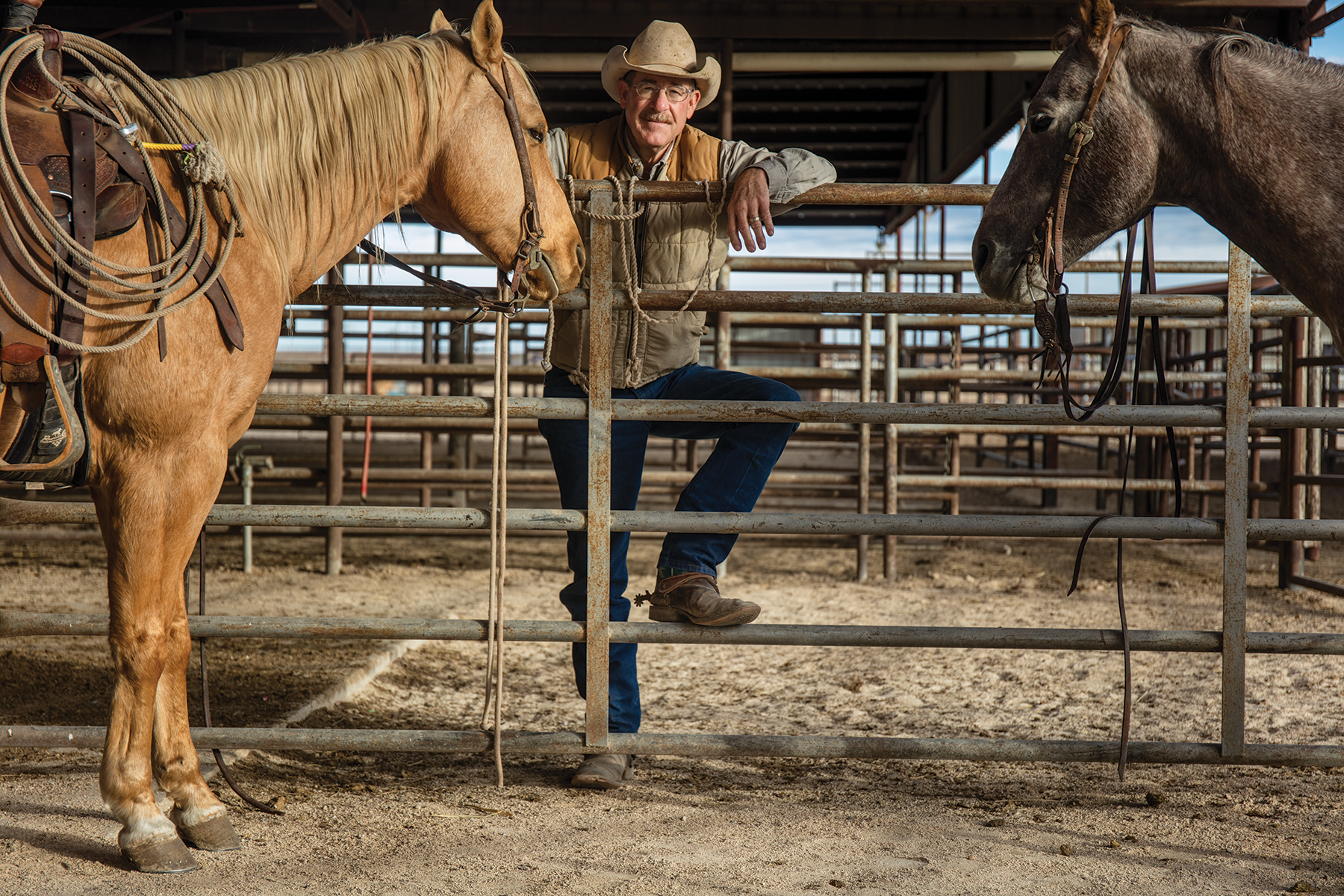
In the early 2000s, the Brormans joined environmental advocates, residents, and others to try to solve their own shust problem by creating a task force to evaluate the issue and look for solutions. Feedlot operators were invited to meetings, and some attended. But when the group made suggestions that could affect cattle feeders’ bottom lines—such as more-intensive pen-scraping to remove excess manure or installing sprinklers to control dust—the feedlot operators balked. One of them left after a meeting or two, sending Jaime a letter demanding she tell no one he had attended at all, she remembers.
As the months passed, support for the group continued to dwindle. KPAN, the local radio station, distanced itself from the effort after the Texas Cattle Feeders Association (TCFA), a trade group claiming 4,000 members, boycotted the station. Though the industry didn’t spend much on advertising, the conflict created political friction for station operators. Bob Josserand, Hereford’s mayor at the time, was one of the biggest cattle feeders in town. A local U.S. Department of Agriculture employee who was initially gung-ho about the initiative told Jaime he’d lose his job if he continued attending meetings. The nursing department at West Texas A&M University in Canyon expressed interest in conducting a public health survey but stood down after university officials conveyed concern, Jaime says. The current head of the university’s nursing department said he wasn’t at the college at that time.
“We just kept running into a wall,” Lawrence says. “Everybody else had to back away, and pretty soon it was just Jaime by herself.” The Brormans and others who participated in the group say they suspect the TCFA torpedoed the project. In a phone call with the Observer, TCFA Vice President Ben Weinheimer said he doesn’t recall the situation.
In Hereford, TCFA is viewed as being powerful, politically connected, and aggressive in defending its interests. The organization’s members claim 6 million head of cattle in Texas, Oklahoma, and New Mexico. Their inventory accounts for 28 percent of the nation’s beef supply. TCFA donates handsomely to political campaigns—with lobbyists in Austin and Washington, D.C.—and sponsors academic research. The group isn’t afraid to flex its considerable muscle: In 2016, after two Texas Tech scientists found that dust blown from feedlots contained antibiotic-resistant bacteria, TCFA allegedly went on the warpath against the scientists, first by urging them not to discuss the research and then by trying to get them fired, Texas Monthly reported. In one notorious case, the organization sued Oprah Winfrey in 1998 after she said on her TV show that she would never eat another hamburger.
Some folks interviewed for this story had grievances against the industry but wouldn’t speak on the record for fear of retribution. “Is it worth the pain in our lives to go to battle against the cattle industry?” one resident says. The Brormans say they aren’t too worried what the industry thinks of them. They’ve been pretty vocal about their displeasure with the dust storms, after all. But, they say, “We still have to live here.”
A Hereford resident who asked to remain anonymous says that fecal dust would collect on the roof of his former home. After infrequent rains, the dust washed into his gutters and rehydrated into a gloop of manure, breeding maggots. Fed up with the situation, he mailed a letter in the mid-2000s to then-Agriculture Commissioner Susan Combs. He included in the envelope a sample from his gutters. Combs’ office sent a response, but instead of pledging to use her regulatory agency to look into the problem, she said she’d ask the industry to look into the issue itself. Nothing ever happened, he says.
Texas has made it difficult for residents to find remedies through the courts. Cattle feedlots, along with poultry and pork megafarms, are protected by a “right to farm” law, which shields them from legal action that might be taken against them by neighbors. Ostensibly enacted to protect family farmers from urban sprawl, the laws instead disenfranchise rural people in favor of big agribusiness, opponents say. “It pretty much eliminated a person’s right to make nuisance claims,” says James, the former Sierra Club director. Some ag-friendly states such as Kansas and Iowa have loosened their right-to-farm laws over the years, but no such movement has been made in Texas.
Weinheimer, the TCFA vice president, says his organization takes air and water pollution seriously. TCFA distributes a so-called Pollution Prevention Plan, which gives tips on reducing dust, he says. The Observer requested a copy of the plan, but the group did not provide one. Weinheimer says he hasn’t seen evidence that feedlot dust can affect respiratory health. “We’ve been working with feedyards on environmental issues for three-plus decades, maybe even longer than that, and we haven’t had any concerns raised by people in terms of respiratory issues caused by feedyards,” he says.
Carmen Fenton, a TCFA spokesperson, implied that concerned residents might be confusing feedlot dust for normal, everyday dust whipped up by the Panhandle wind. “Yes, there’s feedyard dust, but there’s dust in this part of the world in general,” she says. It’s not normal dust, however, that forces Jaime Brorman to hide inside her home for fear of having another asthma attack. It’s not normal dust that makes Lawrence retch when he gets in the shower after a day of work. This is not a normal way to live, they say.

Life for the Brormans and their neighbors may get worse before it gets better. In July, the local newspaper published a notice that a company had applied to open a new feedlot less than a mile east of their home. The permit application was filed by V&T Land and Cattle LLC to feed 50,000 head adjacent to an existing feedlot that’s been a constant headache for the Brormans and their neighbors. That feedlot, Lone Star Calf Ranch, already has the capacity for 105,000 cattle, dwarfing most other feedlots in the county. It’s been subject to criticism over foul odors, proliferating flies, swirling fecal dust, manure fires that smoke for months on end, and dumped animal waste in aquifer watersheds.
After they saw the notice, residents wrote to TCEQ, urging the agency to deny the permit. “The cattle will create a huge increase in the amount of fecal dust, odor, manure, and flies,” Lawrence wrote. Chris Grotegut, a veterinarian whose property would be only a half-mile from the proposed operation, expressed concern about increased pollution in the area. “Please do not let them destroy our neighborhood anymore,” he wrote. Tamara Mimms, whose property would border the operation, sent a comment mentioning how the stench of massive manure fires has permeated her home.
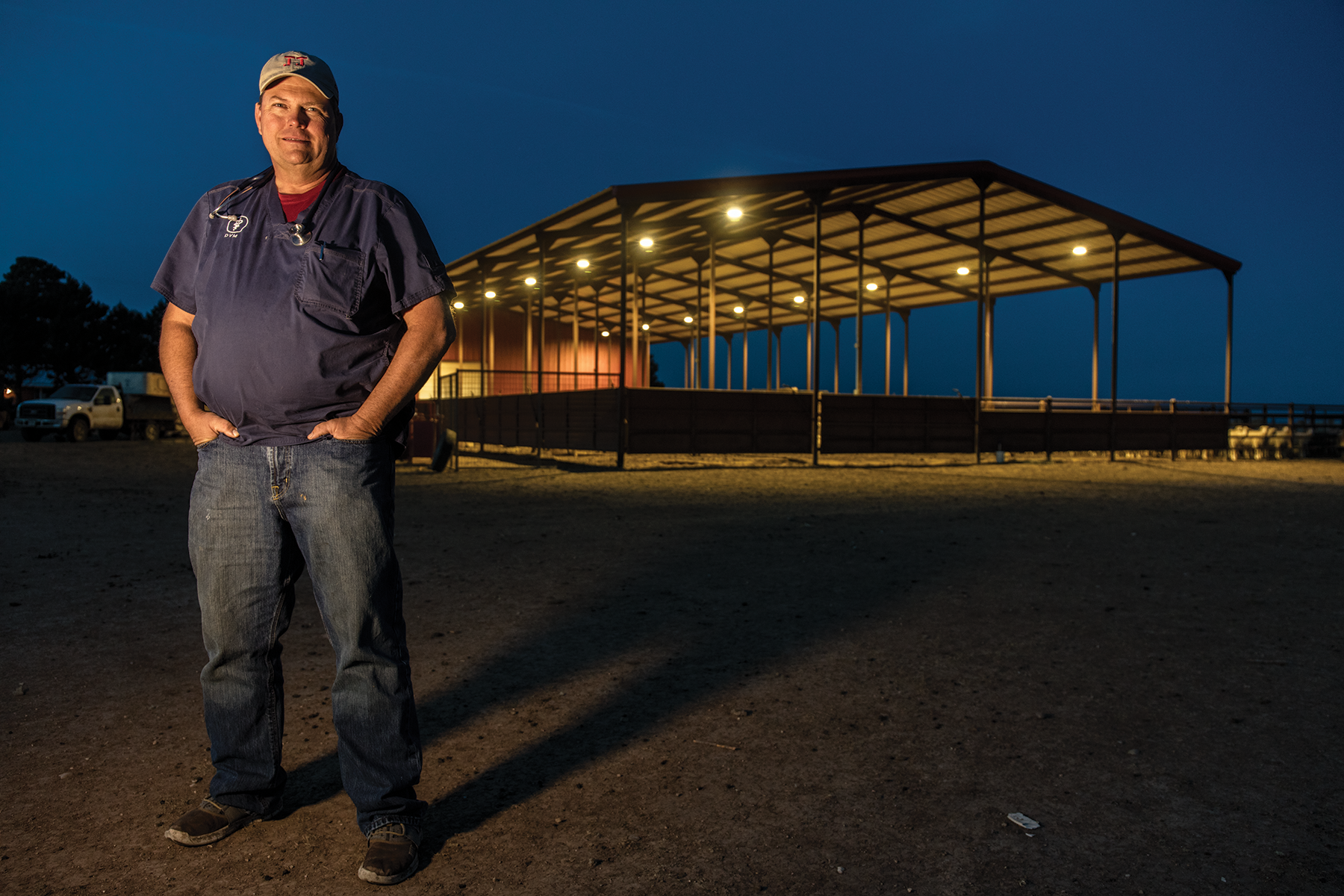
The neighbors view the proposed feed yard as an extension of Lone Star Calf Ranch, though that isn’t precisely true, since the permit was applied for by a different company. But Jake Tuls, who owns a majority stake in the Lone Star operation, is also an investor in the new feedlot, he told the Observer. And the application for the V&T project indicates that the land for the feed yard was originally permitted to Lone Star Calf Ranch. The Brormans, along with Grotegut and the Mimms, say the connection, whether direct or indirect, is important to consider—Lone Star has a history of running afoul of environmental rules.
Last year, residents reported to TCEQ that the company had dumped mountains of manure into a playa lake northeast of town. Not only are playas important overwintering grounds for migratory birds, they also serve as small recharge zones for the Ogallala Aquifer. TCEQ referred the case to the Deaf Smith County District Attorney’s Office for possible prosecution. The office never brought charges.
Tuls says that he had no idea the manure was dumped in the playa; he sold it to a farmer, and after the manure left his property, Tuls didn’t follow what happened to it. He did pay $50,000 to clean up the mess, though, he says. He chalks up complaints about flies, fecal dust, and manure fires to neighbors’ being “misinformed.”
Both TCFA and residents say that feedlots can cut down on dust if workers scrape dried manure from their cattle pens more regularly. But Tuls is skeptical that doing so will make him any more popular in the neighborhood. “If you can do a good job of scraping your corrals, it doesn’t change anything about the 50-mile-an-hour wind,” Tuls says of the dust generated by his business. “I don’t know why everybody’s picking on me.”
Tuls says he originally operated in California but felt squeezed by environmental regulations there. So he moved his business to Texas, which he describes as “ag-friendly.” He has a point: TCEQ does not consider fecal dust when determining a polluter’s “emissions inventory.” If feedlot dust was taken into account, many feedlots would be classified as major polluters. They would be regulated more strictly and could also be required to pay a per-head charge because of it.
The Brormans and their neighbors requested that TCEQ hold what’s called a “contested hearing” so members of the public could air their concerns on the V&T Land and Cattle permit. Their requests were denied. A TCEQ spokesperson says the agency is moving forward with approving the permit. When asked why the agency didn’t hold a hearing, especially considering the serious nature of residents’ concerns, the spokesperson said TCEQ doesn’t hold hearings for what’s termed a “general permit authorization.” Almost all CAFO permits fall under this category.
Even without a new CAFO in the neighborhood, climate change will likely exacerbate the conditions that lead to fecal dust storms in this part of the Panhandle. Summer high temperatures in Amarillo are expected to rise 4.6 degrees by 2050. Rainfall events will be extended, but so will droughts; in the early 2000s, when Jaime formed her activist group, the Panhandle was drought-stricken. Complaints about fecal dust ticked up in 2011, during the worst single-year drought ever recorded in Texas.
The Brormans frequently think about moving to town now, though they say they’d miss their little slice of the country, dust or not. They’re used to living out in the sticks—having neighbors would feel strange—but Jaime’s health may give them no other option. They’ve asked around about selling their property before, but they wonder who in their right mind would buy the place once they find out about the dust problem.
Eventually, they say, they may be faced with a crappy proposition: giving up and selling their land to the feed yards.
READ MORE:
-
A Solitary Condition: Texas has banished hundreds of prisoners to more than a decade of solitary confinement, an extreme form of a controversial punishment likened to torture. Many of these prisoners aren’t sure how—or, in some cases, if—they will ever get out.
-
Who Is John Cornyn Serving? The senior senator from Texas has mastered the art of political subservience, making him very powerful—and perhaps vulnerable.
-
Bridge to Nowhere: Where the Texas Gulf Coast meets Mexico, a trio of fossil fuel companies is planning an industrial complex the likes of which Texas’ Rio Grande Valley has never seen.
